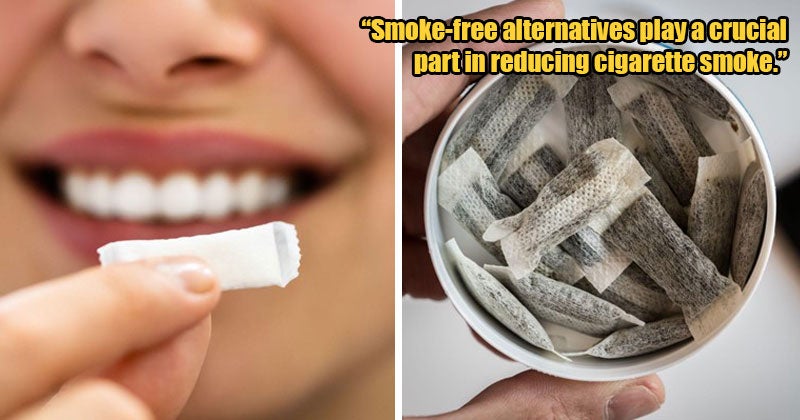The recent Control of Tobacco Product and Smoking Bill 2022 that the Ministry of Health introduced has led to a division of opinion. Some support the bill while others believe amendments are necessary for the new law to be effective. One of the suggestions mentioned by politicians and major stakeholders is a separate legislation for e-cigarettes and vape products.
Vape industry players have been urging the government to regulate the industry for years, but the GEG will be taking it to the extreme. Instead of just regulating vape products, the GEG groups tobacco products, cigarettes, and vape products and places them under the same penalties and restrictions. But, as demonstrated in a video published by the UK Health Security Agency, they are not the same; smoke-free alternatives do not combust and hence do not produce smoke. They contain fewer harmful chemicals when compared with cigarette smoke. It is, however, worth noting that they are not risk-free to users.
Malaysia should consider the role of alternatives like vape products as they are part of harm reduction strategy because that is what developed countries are doing. The UK, Japan, and New Zealand are some of the countries that perceive vape products as smoke-free alternatives that are crucial in harm reduction to tobacco smoking. Even the Philippines has enacted the Philippines Vape Bill into law recently in hopes of improving public health through smoking cessation.
Why is harm reduction an important strategy to cease smoking?
Harm reduction is an approach to minimising the harm caused by human behaviours. In the case of cigarette smoking, smoke-free alternatives are the better options to minimise harm. However, if the GEG policy is implemented, this group of individuals will be robbed of the option to choose better alternatives. While total abstinence may have worked with some smokers, a survey showed that many find total abstinence an infeasible solution.
What are smoke-free products/alternatives?
Smoke-free products are only possible due to the advancement of technology and science; they are made to cater to consumers’ ever-changing needs. On top of being less harmful than cigarettes, smoke-free products like heated tobacco products (HTPs) also provide smokers with a similar satisfaction in taste, ritual, and sensorial experience.
These products include e-cigarettes (vape), HTPs, snus and oral nicotine pouches. All these products can deliver nicotine while omitting the combustion process.
Believe it or not, the absence of combustion is the main factor that why smoke-free alternatives are less harmful than smoking cigarettes. This is because cigarette smoke is the main cause of smoking-related diseases.
According to PMI who supported the writing of this article and Dr. Markus Nordlund, Global Head Life Sciences Special Projects of PMI, he said cigarette smoke not only contains solid particles, or soot, and liquid droplets but also contains thousands of chemicals, out of which 100 or so are recognized by health authorities to be harmful and potentially harmful. These smoke particles are generated from the high temperatures processes happening during combustion.
Besides, smoking forms cigarette tar which sticks to the smoker’s lungs and stains their fingers and teeth. Compared to cigarettes, HTP and vape products produce aerosol instead and do not generate cigarette tar.
Heated tobacco products (HTPs) successfully reduced smoking in Japan
HTPs contain tobacco and still emit some of the toxicants found in cigarette smoke. However, they have reduced toxicant levels as they are not burned but heated at lower temperatures that are sufficient to release nicotine and flavours from the tobacco.
In Japan, HTPs were proven to be more effective than nicotine replacement therapies. VapingPost reported that the Vice Director of the AOI Universal Hospital in Kawasaki, Kumamaru Hiroya, said that nicotine replacement therapies did not bring desired results.
“However, ever since 2014, three heated tobacco products have been launched officially nationwide in Japan and these have been penetrating 25 percent [of the total smoking population] and this product has been successful to reduce cigarette smoking in Japan so far by 30 percent in three to four years,” said Hiroya.
Vaping plays a huge role in New Zealand’s Smokefree 2025 goal
“Vaping has the potential to help people quit smoking and contribute to New Zealand’s Smokefree 2025 goal,” says New Zealand’s Ministry of Health. According to the New Zealand Health Survey in December 2021, smoking rates in the country have decreased as vaping rates increased. The Action for Smokefree 2025 (ASH) society said that that was the largest decrease in smoked cigarette use.
Unlike cigarettes, e-cigarettes do not combust. They heat liquids that may or may not contain nicotine to produce an aerosol. An e-liquid usually contains water, nicotine, flavourings, and propylene glycol or vegetable glycerine base.
Both Public Health England (PHE) and the Tobacco Advisory Committee of the UK Royal College of Physicians (RCP) (RCP) had reviews that suggested vaping is about 95% safer than cigarette smoking. These reviews come after a 2014 study that concluded cigarettes are the most harmful whereas Electronic Nicotine Delivery Systems (ENDS) only have a 4% of maximum relative harm.
Snus contributed to lower smoking-related mortality rates in Sweden

While snus is permitted in Malaysia, it is less popular compared to other tobacco and nicotine products. However, it is a popular smoke-free tobacco product in Sweden and Norway. Snus can come in two forms: loose and portion. It also comes in various sizes, differs in types, and can be nicotine-free.
A 2019 review of snus concluded that using snus is indeed less harmful than smoking cigarettes. Although Sweden’s total tobacco consumption is almost similar to other European countries, its smoking-related mortality is lower. WebMD described snus as the middle point where it is “safer than cigarettes but not as safe as nicotine gum.”

Another product similar to snus is called the oral nicotine pouch. Oral nicotine pouches may look similar, but they do not contain tobacco leaves. They are marketed as “tobacco-free” products and deliver nicotine through the gums instead of the lungs.
Smoke-free alternatives play a crucial part in reducing cigarette smoke
The government should not disregard the role smoke-free alternatives can play in building a smoke-free country.
Policymakers should understand that instant cessation of smoking is not easy, and smokers should be given other options if they choose to continue smoking. What they could have done is take a page from developed countries and set different regulations for smoke-free products. They should also ensure that the public has adequate knowledge about smoke-free products and a thorough understanding of conventional cigarettes so that they can make a better choice, should they choose to continue smoking. Nevertheless, the best option is to quit smoking.









































